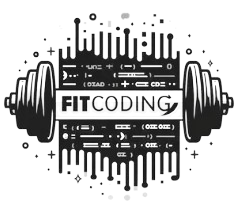Healthcare professionals must manage medical risks to protect their patients and their careers. Malpractice claims can arise from misdiagnoses, procedural errors, or communication failures. To safeguard against legal and financial consequences, healthcare providers should secure comprehensive malpractice insurance. Risk management involves thorough documentation, adherence to medical guidelines, and clear patient communication. Regular training and staying informed about evolving medical standards can reduce errors. Implementing strong risk management practices and maintaining appropriate malpractice coverage ensures a safer patient environment and protects professional reputation. This not only reduces liability but also enhances trust in the healthcare system.
In the fast-paced world of healthcare, the focus on malpractice insurance underscores the critical nature of managing medical risks effectively. By its very nature, the healthcare sector involves addressing many intricate and often unpredictable variables. As technology grows and patient expectations evolve, healthcare providers are constantly challenged to devise and implement strategies that prevent risks and optimize the safety and efficacy of care. This dual need for innovation and safety forms the backbone of effective risk management in medical practice, creating a crucial imperative for healthcare professionals at all levels to stay ahead in this complex landscape.
Identifying Common Medical Risks
The landscape of medical risks is broad and multifaceted, with potential hazards ranging from diagnostic errors and surgical mishaps to medication mismanagement and patient data breaches. Each risk category presents unique challenges with far-reaching implications for patient safety and healthcare delivery systems. Misdiagnosis can lead to inappropriate treatment plans, compounding patient health issues. Surgical errors due to procedural oversights or equipment malfunction may result in severe patient complications, extended hospital stays, and heightened liability concerns. Medication errors, often caused by miscommunications, incorrect dosing, or contraindicated drug prescriptions, pose significant health risks. Addressing these requires understanding their causes, potential impact, and strategic preventative measures.
Implementing Safety Protocols
Safety protocols, encompassing a range of practices from basic hygiene to complex procedural checklists, represent the frontline in minimizing healthcare risks. Thorough implementation of these protocols calls for consistent vigilance and institutional commitment. For instance, surgical checklists have emerged as a powerful tool in reducing intraoperative errors and enhancing patient safety outcomes. These checklists serve multiple functions—ensuring procedural adherence, facilitating inter-departmental communication, and establishing standard operating procedures across varying contexts. Likewise, managing electronic health records (EHR) provides accurate and timely data retrieval, enhancing diagnostic accuracy and continuity of care. By embedding a culture of rigorous procedural compliance, protocols lay the groundwork for an environment wherein patient safety is prioritized.
The Role of Technology in Risk Management
Technology significantly reduces malpractice risks in healthcare by ensuring accurate documentation through electronic health records (EHRs). This minimizes errors due to miscommunication, lost paperwork, or incomplete patient histories. With detailed digital records, healthcare providers can track patient progress, avoid medication errors, and make informed treatment decisions, ultimately lowering the chances of malpractice claims.
Artificial intelligence (AI) and data analytics further enhance risk management by identifying patterns that may indicate potential issues. AI-powered systems can flag unusual prescription patterns, detect early warning signs of patient deterioration, and assist in diagnosis, helping to minimize medical errors. Additionally, telemedicine platforms have expanded access to healthcare while maintaining accurate digital records, reducing the risk of misdiagnosis due to incomplete patient information.
Malpractice insurance providers recognize the value of technology in reducing liability. Some insurers offer incentives for medical professionals who implement advanced risk management tools. By integrating technology into daily practice, healthcare providers can improve patient safety, enhance efficiency, and reduce the likelihood of costly legal claims. As technology evolves, it will remain critical in managing risks and ensuring high-quality patient care.
Continuous Training and Education
Healthcare professionals require continuous training and education to reduce malpractice risks and improve patient care. Staying updated on medical practices and legal standards is crucial for doctors, nurses, and other providers, especially if they want to find locum tenens work. Regular training helps refine skills, minimize errors, and adhere to best practices, reducing malpractice claims.
Malpractice insurance providers often emphasize the importance of ongoing education as a key factor in risk management. Many insurers offer premium discounts or incentives for professionals who participate in continuing medical education (CME) courses or risk management training. These programs cover proper documentation, patient communication, and medical procedures to help prevent legal issues.
By investing in education, healthcare professionals protect themselves from legal and financial consequences and enhance their quality of care. Staying informed about new medical techniques, ethical considerations, and evolving regulations ensures a safer environment for patients and providers. Continuous learning is a proactive step toward reducing liability and maintaining trust in the healthcare system.
Challenges in Implementing Risk Management Strategies
Implementing risk management strategies can be challenging due to limited financial resources, insufficient infrastructure, and cultural resistance to change. These barriers can lead to outdated facilities, inadequate staffing, and restricted access to cutting-edge technologies, which can diminish the overall impact of risk management initiatives. To successfully navigate these challenges, healthcare leaders must create a collaborative environment involving staff at all levels in risk strategy design and execution, promoting transparency, inclusivity, and a shared vision for safer practices.
Emerging technologies like AI are set to revolutionize healthcare by redefining risk management boundaries. AI can analyze large datasets, identify risk factors, and provide personalized care. As these technologies mature, they will reinforce risk management strategies, improving patient safety and care outcomes.











